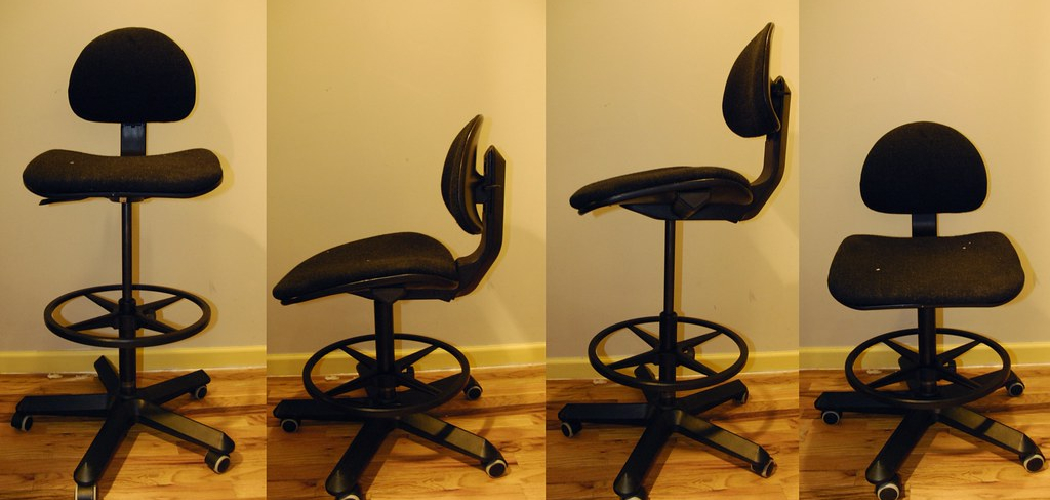There’s a lot to think about when it comes to office chairs – size, fabric, style, and of course, height. But how do you know what height is right for you? And how can you be sure that your chair is the right height for your desk? In this post, we’ll show you how to measure office chair height and help you find the perfect fit for both you and your workspace.
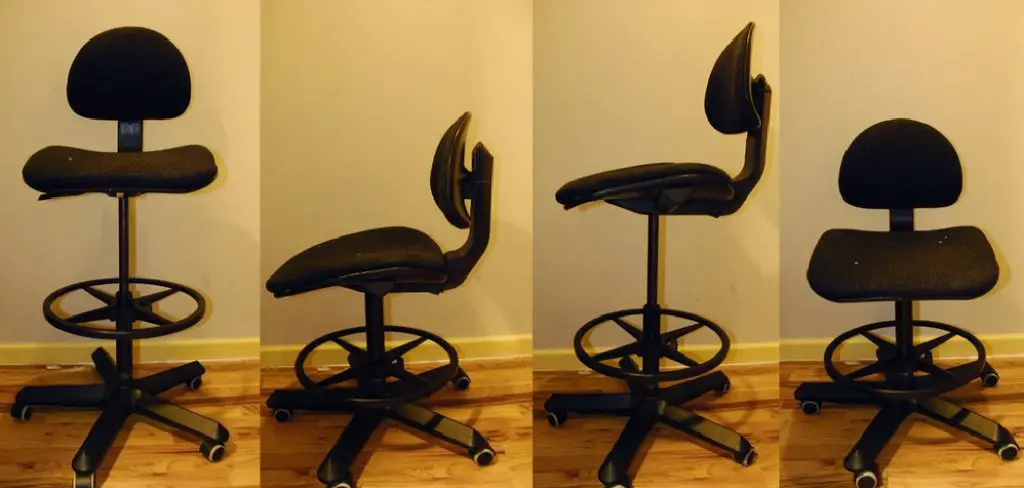
Remember, everyone’s body is different, so it is important to find the right chair that fits you properly. There are many chairs on the market today, and with a little research, you should be able to find one that meets your needs. Let’s get started!
How Do I Know if My Office Chair Is Too High?
The main sign that your chair is too high is if you have to lean forward in order to reach the desk surface. If your office chair is too low, it will cause strain on your back and shoulders as you have to hunch over. However, if your office chair is too high, it will put a strain on your thighs and legs as you struggle to reach the desk surface.
Other signs that your office chair height may be too high include having difficulty reaching the keyboard with your arms straight and feet flat on the floor, if you can’t sit all the way back in the chair or if there’s a gap between the back of your legs and seat pan.
When Should I Measure Office Chair Height?
It’s best to measure your office chair’s height before you buy one. This way, you can make sure that the chair fits properly and comfortably for both your body type and desk space. If possible, bring a tape measure with you when shopping so that you can take precise measurements of all the chairs that interest you.
10 Methods How to Measure Office Chair Height
1. Use a Tape Measure:
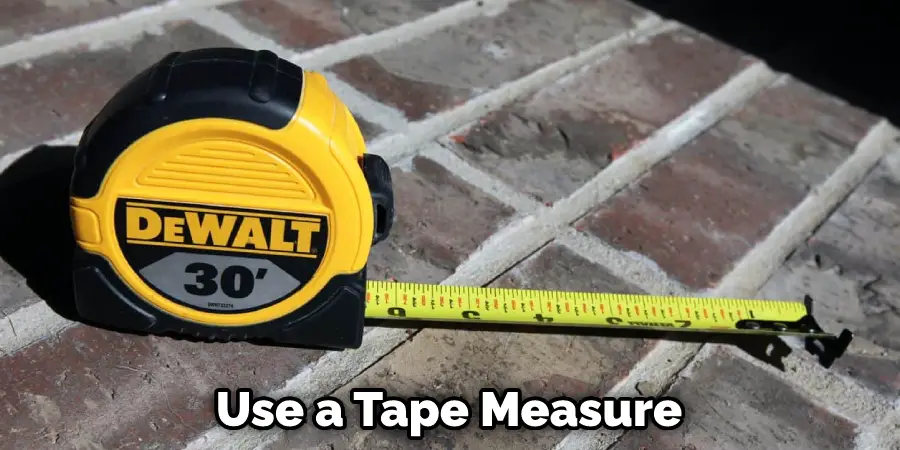
Before you buy a chair, measure the height of your desk to ensure that it fits with the chair. You can use a tape measure to accurately measure both pieces and make sure they match up perfectly. If you don’t have a tape measure, you can also use a ruler. Make sure to measure from the floor to the top of your desk.
2. Get an Adjustable Chair:
Many chairs today come with adjustable heights allowing them to be tailored to fit any person’s body size and desk height. Look for models with features like crank handles, telescopic columns, or gas lifts – all of which allow you to adjust the height of your chair easily and quickly.
While they can be more expensive, they will provide the best long-term comfort and support. Try to find one with adjustable arms.
3. Take Body Measurements:
Before choosing an office chair, it is important to take some body measurements as well. These include measuring the distance between your hips and knees when sitting on a flat surface and the distance from your wrist to elbow when sitting in a neutral position.
While these numbers may vary depending on the type of chair and your body size, they can help you find a chair that is the right size for you.
4. Measure Your Legs:
Knowing the length of your legs can help you decide whether you need a higher or lower chair. To measure, sit on a flat surface and measure the distance between your hip bones and the floor.
Try to find a chair with a seat pan that is the same length or slightly longer than your legs. Make sure that your feet can rest comfortably on the floor or a footrest when sitting in the chair.
5. Consider Seat Depth:
The seat depth should be enough to support your entire upper leg area while allowing for some movement at the knees and ankles. A good rule of thumb is that there should be two inches of clearance between the back of your knee and the front edge of the seat pan.
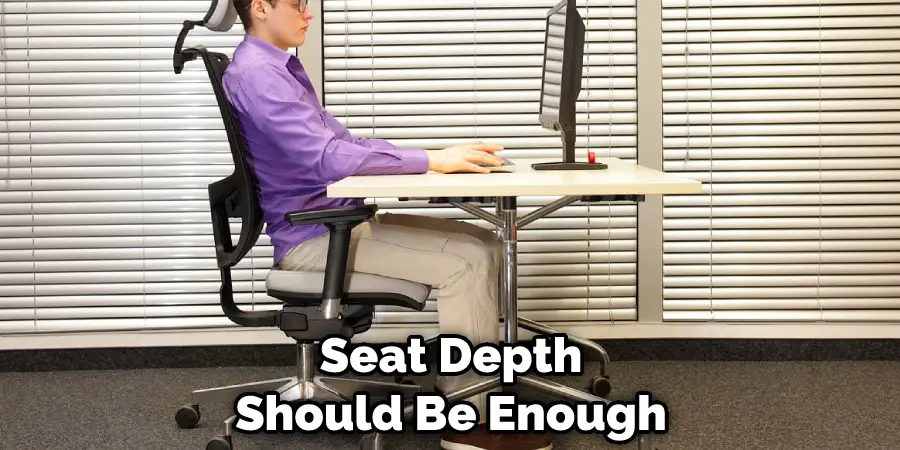
If the seat is too short, your thighs will not be supported, and you will end up rocking back and forth. However, if the seat is too deep, your knees will be pushed inwards and cause discomfort.
6. Try Sitting Test:
Once you have found an office chair with all the basic measurements right, it’s time to test it for comfort. Sit in the chair and make sure there is ample support for your lower back, arms, and legs.
If the chair is too low or high, make sure you can get it adjusted before making the purchase. Make sure to try out different chairs and adjust the features until you find one that fits your body perfectly.
7. Compare With Other Chairs:
It is also a good idea to compare office chairs with one another before making a purchase decision. This will give you an idea of which one offers more comfort or better ergonomics than the other.
Try to sit in each chair and compare their height, seat depth, armrests, and other features before making a decision. Make sure that each chair offers the right amount of lumbar and neck support for your body type.
8. Review Manufacturer Specifications:
Read through the manufacturer’s product specifications to understand exactly what type of adjustments they offer in terms of height, tilt angles, lumbar support levels, etc., as well as any additional features like armrests or headrests that may be included.
Keep in mind that not all chairs offer the same features, so make sure to check out the details before making a purchase.
9. Look Into Accessories:
Some models come with additional accessories like footrests and arm pads that can further improve the comfort level of your office chair. If you’re looking for an even higher degree of ergonomic support, consider investing in these items too.
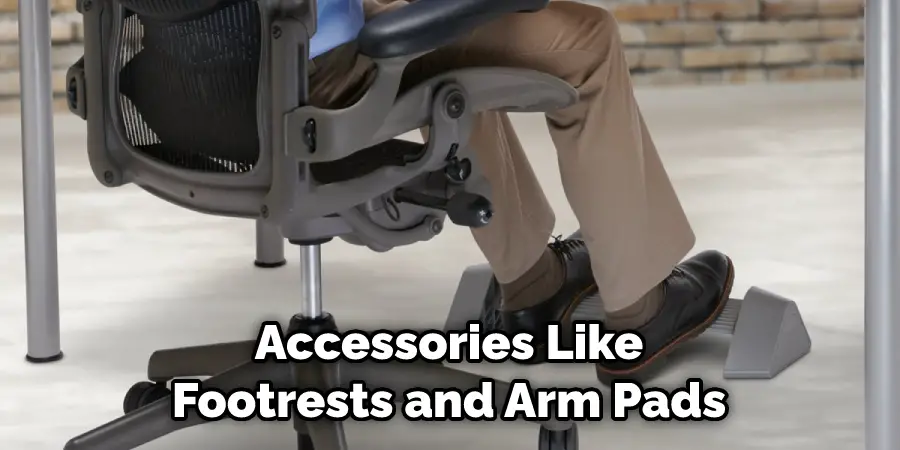
If you’re using a laptop or desktop, you may also want to invest in a laptop stand or monitor arm. These can reduce strain on your eyes, neck, and shoulders and make working more comfortable.
10. Read Reviews:
It’s always a good idea to read reviews from people who have purchased the same office chair that you’re considering. This will give you a better idea of what users think about the product and any potential problems they may have encountered with it.
However, take these reviews with a grain of salt and make sure to do your own research to ensure that you’re getting the best chair for your needs.
By following these tips, measuring your office chair height correctly should be a breeze! Remember to take into account all body measurements and desk size when picking out your perfect seat – this way; you can ensure maximum comfort and productivity at work!
Things to Consider While Measuring Office Chair Height
1. Ergonomics:
When selecting an office chair, ergonomic considerations should be taken into account. That means the chair must fit your body size, support your lower back and provide optimal comfort and support while you are sitting in it. The height of the chair should be adjustable to accommodate people of different heights and sizes.
2. Adjustability:
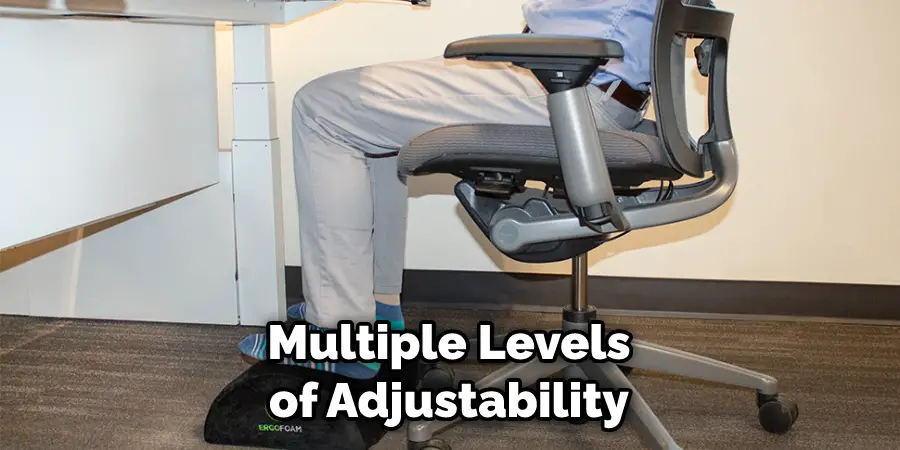
It is important to find a chair that has multiple levels of adjustability so that you can customize the seat height, back angle, and armrests as well as pivot for more comfortable movement when working at a desk or computer station. Many chairs offer simple lever mechanisms for adjusting seat height and other features such as lumbar support and headrests.
3. Comfort:
A chair that is comfortable to sit in for long periods of time is essential. Look for features such as memory foam cushioning, adjustable armrests, and tilt tension adjustment. Also, consider if a swivel base with locking casters would be helpful for easier movement when needed.
4. Material:
Make sure your office chair is made of quality material that will stand up to daily use. Leather and fabric are popular choices that offer durability and a professional look while providing comfort during those long days at the office.
5. Warranty:
Most chairs come with some form of warranty, so make sure you take advantage of this when selecting your office chair. Read through the warranty details carefully to understand what type of coverage it provides and how long it lasts. A quality chair should last you many years, so investing in a good warranty can be beneficial in the long run.
6. Budget:
Don’t forget to factor in your budget when selecting an office chair. While it is important to purchase a quality chair that will last and support your body properly, you don’t want to break the bank either. Determine how much you are willing to spend and look for chairs within that range that suit all of your needs and preferences.
Conclusion
Measuring your office chair height is a crucial step to take before you buy a new chair. If you don’t measure, you risk ending up with a chair that’s either too tall or too short for you. By following the steps on how to measure office chair height in this blog post, you can ensure that you get the right size chair for your needs.
And once you have your perfect-fitting chair, be sure to adjust it properly so that you can sit comfortably and work effectively at your desk. With a little bit of effort upfront, you’ll be able to enjoy years of comfortable use from your office chair.

